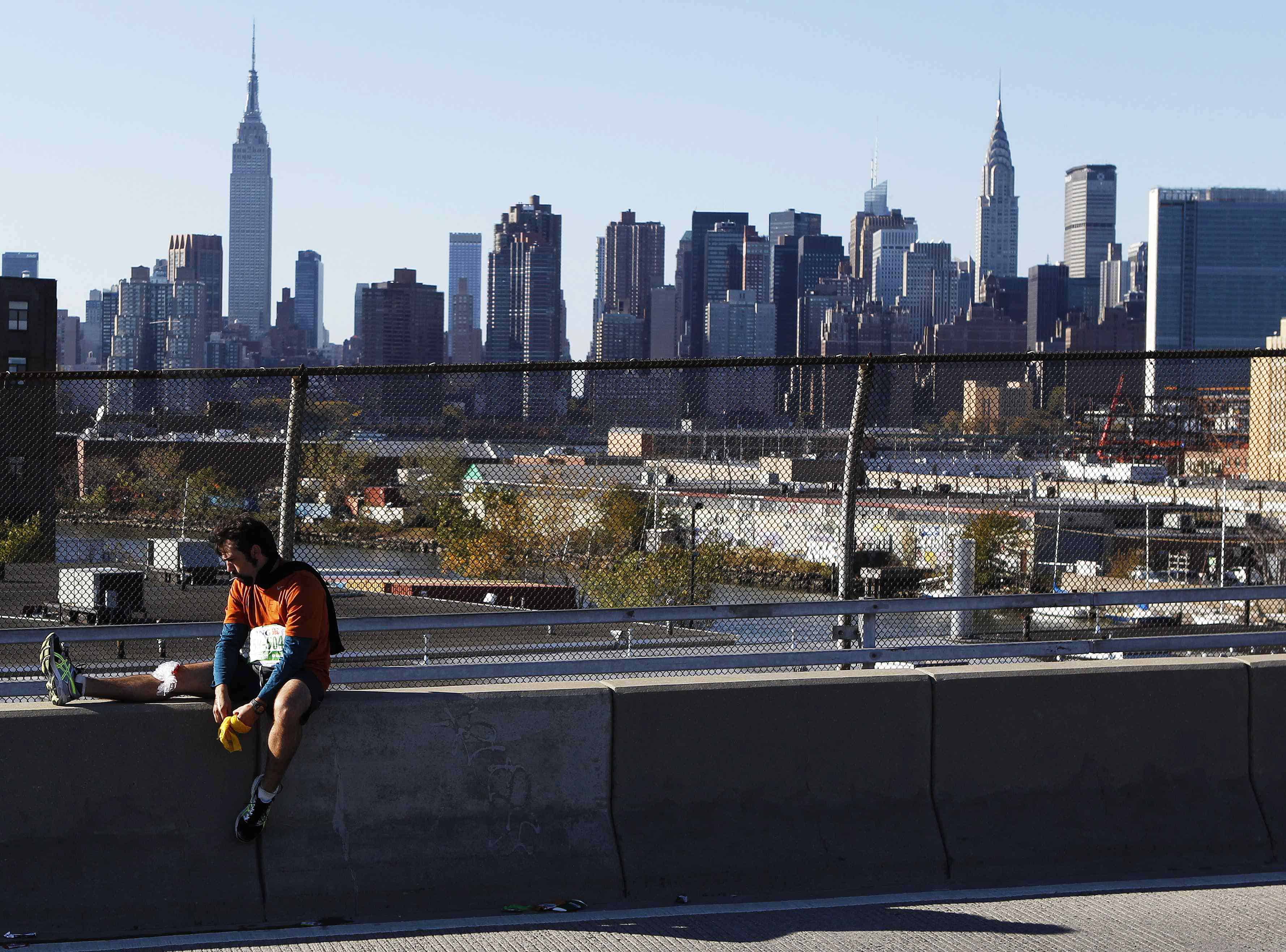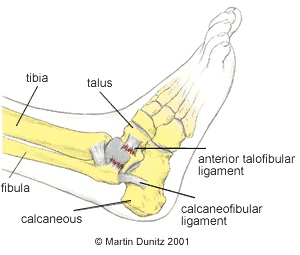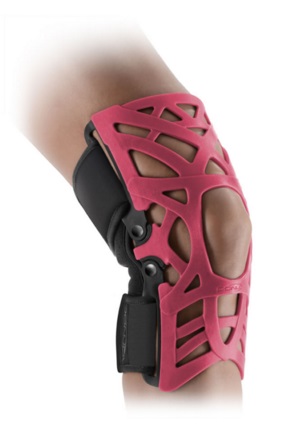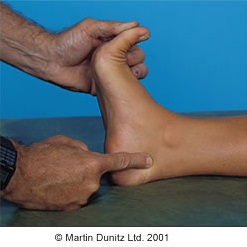The second part of our guide to – in no particular order – the top 10 running injuries, including advice on how to recover and product suggestions to aid your rehabilitation. Part One is here.
SPRAINED ANKLE
Refers to soft tissue damage around the ankle, usually caused by an inversion injury, where the ankle is twisted inwards, or an eversion injury, where the ankle is twisted outwards. As well as damage to the ligaments highlighted in the diagram above, the capsule which surrounds the ankle joint is also damaged, causing bleeding within the tissue and swelling and pain in the ankle. It can be classified by a first, second or third degree strain:
- First degree: Only a few ligament fibres are damaged. Pain when turning the foot in or out and also when touched.
- Second degree: More extensive damage to the ligament with associated swelling. Pain is more severe and it isˤifficult to walk without discomfort.
- Third degree: A complete rupture of the ligament with swelling and a possible joint dislocation. May be associated bone injuries and an x-ray is recommended. Pain is excruciating and walking is impossible; there may be deformity if the ankle is dislocated.
Itֳ important not to put too much weight on the damaged ankle initially, so walking should be avoided if possible, and protection can be provided through a cast with crutches to aid movement. For a second degree sprain, donִ use crutches for longer than necessary and gently put weight on the ankle as soon as the pain allows. Rehabilitation may include developing balance and strength in the ankle.
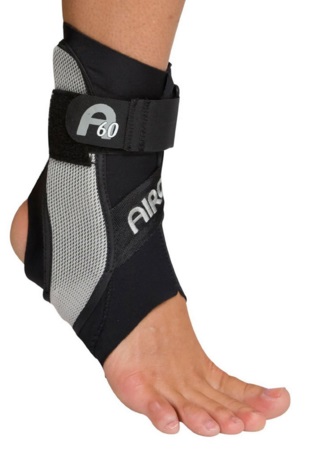 Aircast A60 Ankle Brace: Worn by Andy Murray to support and protect the ankle from sprains during sport.
Aircast A60 Ankle Brace: Worn by Andy Murray to support and protect the ankle from sprains during sport.- Air Walker Ankle and Foot: Protects a badly sprained ankle and enables the sufferer to continue to move around.
- Wooden Wobble Board 40cm: Designed to help treat and prevent ankle injuries by helping improve balance and core strength during rehab.
RUNNER֓ KNEE
There are two different conditions which can both be identified as runnerֳ knee.
ILIOTIBIAL BAND SYNDROME (ITBS)
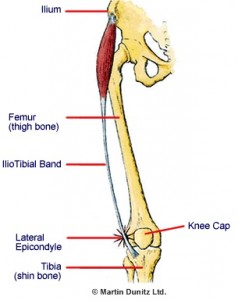 A painful overuse injury which reportedly affects between two to ten per cent of all runners. The iliotibial band (ITB) is a tough length of fibrous tissue which attaches to the outer side of the pelvis, runs down the outer side of the thigh, and inserts into the outer side of the shin bone. During movements of the knee, it moves over the widest point of the thigh bone, the part of the end of the femur known as the lateral epicondyle.
A painful overuse injury which reportedly affects between two to ten per cent of all runners. The iliotibial band (ITB) is a tough length of fibrous tissue which attaches to the outer side of the pelvis, runs down the outer side of the thigh, and inserts into the outer side of the shin bone. During movements of the knee, it moves over the widest point of the thigh bone, the part of the end of the femur known as the lateral epicondyle.
When there is repeated bending or straightening of the knee joint, such as with running, the ITB can intrude on the lateral epicondyle, and the resulting friction can lead to inflammation of the tissues. A tight ITB increases the level of friction and so increases the possibility of developing ITBS.
Pain is typically present on the outer side of the knee joint and may radiate up the thigh or down the outer side of the shin. Usually this pain is only present during activity and settles during rest, but there can be discomfort when going up or down stairs.
Reducing inflammation in the tissues is important and ice therapy can be used to achieve this, as well as rest. Stretching the ITB and the muscles attached to it, such as the gluteus maximus (buttocks) and the tensor fasciae latae (thigh), can reduce tightness.˄iscrepancies in leg length, problems with posture and uncontrolled lowering of the arch of the foot can all contribute to ITBS and should be treated in order to help prevent it.
Read more
- Ultimate Performance Ultimate Runnerֳ Knee Strap: The multi-purpose strap uses upper, lower and
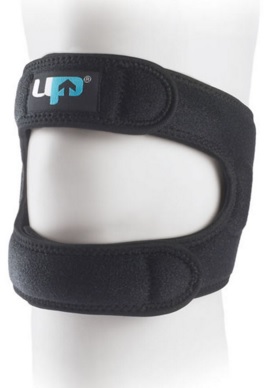 side compression to combat pain and discomfort in the knee.
side compression to combat pain and discomfort in the knee. - Mueller ITB Strap: A lightweight strap which helps relieve pain on the outer side of the knee, associated with ITB syndrome.
- Aircast Knee Cryo Cuff with Cooler: Combines ice therapy and compression to relieve knee pain and swelling.
PATELLOFEMORAL PAIN SYNDROME
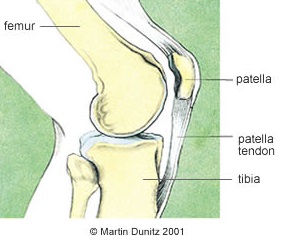 Associated with the kneecap. When the knee bends or straightens, the kneecap glides along the patellofemoral groove on the thigh bone, controlled by the thigh muscles. Patellofemoral maltracking refers to the kneecap straying from this path, which produces stress on the under-surface of the knee.
Associated with the kneecap. When the knee bends or straightens, the kneecap glides along the patellofemoral groove on the thigh bone, controlled by the thigh muscles. Patellofemoral maltracking refers to the kneecap straying from this path, which produces stress on the under-surface of the knee.
Tightness in muscles such as the hamstring and calf, weakness or incoordination in the thigh muscles, and altered posture in the hip, knee or foot can all contribute to patellofemoral pain syndrome. The most common symptom is the pain felt at the front of the knee, evident while running.
After treating the initial pain, itֳ recommended that rehabilitation includes stretching the calf muscles, the hamstrings and the ITB. Strengthening and improving the coordination of the vastus medialis oblique (VMO) muscle, located just above the kneecap on the inner aspect of the thigh, is also important to help maintain the kneecap in its correct position.
- Medi Genumedi PT Knee Brace: Specially designed for the rehabilitation of patellofemoral pain syndrome. Zoned padding and a tension strap enhances stability in the patella.
- Neo G Patella Band: Helps normalise patella tracking and reduce unwanted or excessive movement in the patella.
- Donjoy Pink Reaction Knee Brace: Stabilises the patella by improving tracking and associated pain.
SHIN SPLINTS (MEDIAL TIBIAL STRESS SYNDROME)
Shin splints is a common term for shin pain during running, although it can be misleading due to the several different conditions it refers to. One of the most common of these, occurring frequently in distance runners, is medial tibial stress syndrome, of which there are two types. The first type is characterised by a stress reaction on the inside border of the shin bone Рthe preceding stage to a stress fracture Рwhile the second type is characterised by irritation of the outer surface of the inside of the shin bone.
refers to. One of the most common of these, occurring frequently in distance runners, is medial tibial stress syndrome, of which there are two types. The first type is characterised by a stress reaction on the inside border of the shin bone Рthe preceding stage to a stress fracture Рwhile the second type is characterised by irritation of the outer surface of the inside of the shin bone.
Medial tibial stress syndrome is largely caused by over-use, and those who run regularly on hard or uneven surfaces are more likely to be affected. Pain is present on the inner border of the shin during and following exercise.
Most patients respond well to rest, strengthening and stretching exercises, and a gradual return to running when their symptoms subside. When beginning or changing an exercise programme, any increase in activity must be gradual in order to decrease the chances of suffering from medial tibial stress syndrome, while good quality and supportive shoes and insoles can help greatly.
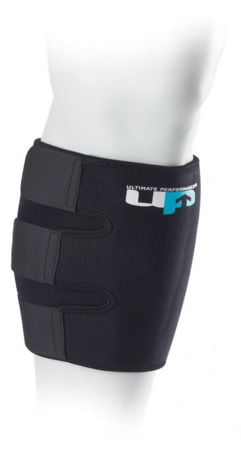 Ultimate Performance Ultimate Neoprene Shin/Calf Support: Relieves symptoms of shin splints through compression and firm contact.
Ultimate Performance Ultimate Neoprene Shin/Calf Support: Relieves symptoms of shin splints through compression and firm contact.- Sorbo RX Ultra Orthotic Arch Insole with Inserts: Proven to help pain and ease the symptoms associated with shin splints.
- McDavid Active Runner Socks White: The gentle compression effects of the targeted compression zones make these socks ideal for those recovering from shin splints.
ACQUIRED FLAT FOOT (TIBIALIS POSTERIOR PAIN)
Pain in the tibialis posterior muscle, which helps the calf muscles push the foot down and turn the foot inwards, can lead to acquired flat foot. This muscle arises from the back of the shin bone, passes down the inside of the ankle as a tendon, and inserts into the tarsal bones in the middle of the foot. If the heel turns out at the bottom, causing the foot to roll inwards, more strain is placed on the tibialis posterior tendon which means it can become prone to injury.
If these issues with the tendon are ignored and sporting activity continues, it may rupture completely and require surgery. Because the tendon plays an important role in providing support to the arch on the inside of the foot, its correct functioning is vital, as a rupture can cause the arch to lose support and գollapse.֜n
Problems usually occur in runners due to repeated overuse, or when a lot of running around tight bends or on a road with a camber has taken place. Pain is felt on the inside of the ankle during movements, while the navicular bone, located at the top of the foot, and the medial malleolus, located behind the bony lump on the inside of the ankle (as pictured below), can be painful to touch and become swollen.
A period of complete rest, with some experts suggesting immobilisation of the area, is advised. Itֳ not as simple as returning to running once the area is pain free, however. If there is a˳pecific problem which caused the overuse in the tendon, such as abnormal mechanics in the legs or feet, it needs to be diagnosed and addressed.
- Spenco RX Full Length Orthotic Arch Support: Specifically designed for low, flat or fallen arches.
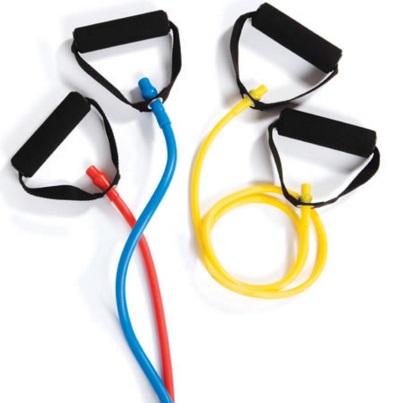 Controls and supports the˦oot.
Controls and supports the˦oot. - Aircast Flat Foot PTTD Brace: Ideal for the treatment of acquired flat foot. Lifts the arch of the foot, relieving pressure on it.
- Resistance Tube (heavy): To be used for progressive strength exercises during rehab from tibialis posterior tendon problems.



